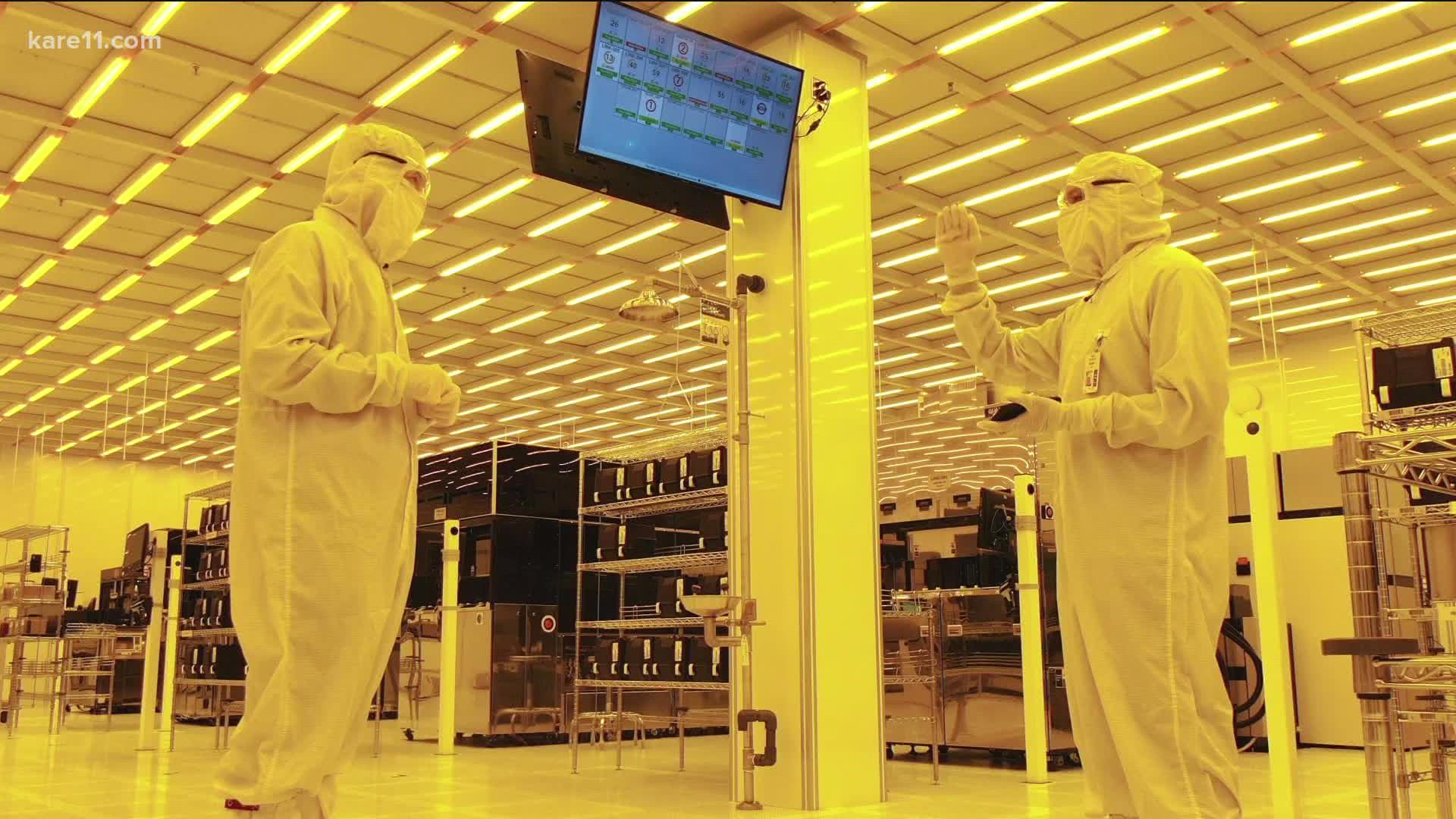BLOOMINGTON, Minn. — No matter how many times you see drone video of rows of unfinished pickups sitting in empty lots, or read headlines about automakers pausing production, the idea that such a big and costly disruption to the auto industry could come down to something as small as a microchip can be hard to fathom.
"I think blaming everything on a chip shortage is quite simplified," said Surya Iyer, vice president of operations at Polar Semiconductor Inc. in Bloomington. "It is a lot more complex than that."
Iyer would know. Polar is a major manufacturer of microchips found in nearly every type of vehicle. Iyer says roughly half of the chips Polar makes supply the automotive industry, while the others go into large home appliances like refrigerators, washer/dryers and televisions.
"High voltage, high power semiconductor chips, that's our specialty," he said.
The manufacturing process for those chips is extremely specialized and controlled.
Entering the Polar factory requires security clearances and multiple layers of full-body PPE. The process ensures that chips aren't contaminated by tiny particles. Some areas of the factory are even flooded in yellow light, to avoid risking light contamination.
Iyer: "The reason it is yellow is you want to avoid white light interfering with the patterns being made on these wafers. We are in the main photolithography bay. Photolithography is where the pattern is made on the silicon wafer. It is literally the most important step that we do, over and over again, to build a semiconductor chip."
The chips themselves take nearly three months to make, from beginning to end, but Polar isn't producing them one at a time. The factory produces about 20,000 silicon wafers every month. Each of the eight inch disks are packed with 1,000 to 5,000 microchips.
Erdahl: "So you're not actually dividing all those chips up?"
Iyer: "We don't do that here. In our case, it's done in Japan and also in the Philippines."
Iyer says that international trip just to package chips helps illustrate how complex the global supply chain has become. He says the pandemic has also exposed how fragile it is.
"As COVID goes around country by country at different times, it just creates these non-linear disturbances in that supply chain that cause these problems," Iyer said.
So far, disruptions at Polar have been limited, but demand is still far exceeding what they can produce.
"This is the fullest I've seen the factory in my career at Polar," Iyer said. "We are literally at 100% capacity."
In response, they are in the process of expanding, but even for an established factory, it's not a quick fix.
"The lead times on getting these machines has now grown from about 6-9 months to about 12-15 months," he said.
And machines aren't the only concern. He says staffing is down by about 10%, making it hard to keep up.
"If you don't have the right kind of engineer, the right kind of technician, the right kind of operator, things will slow down," Iyer said.
Still, he's hopeful the current challenges, which are impacting so many industries, won't last too much longer.
"I think in six months to one year, we'll be in pretty good shape,"
But he'd still like to see a long-term solution.
"To avoid the same thing happening in the future, I think the United States needs to shore up our own supply chain," Iyer said. "Get more manufacturing of, not just wafers, but also the other pieces of the supply chain here, locally, in the United States. I think there's a huge opportunity here."
The U.S. used to produce more than a third of the world's microchips, but that has fallen to just 12 percent in recent years because companies found that outsourcing the work could save them money. Intel and some others are now planning to add more manufacturing here, and the Biden administration's expanded infrastructure bill add incentives to make it more enticing.

